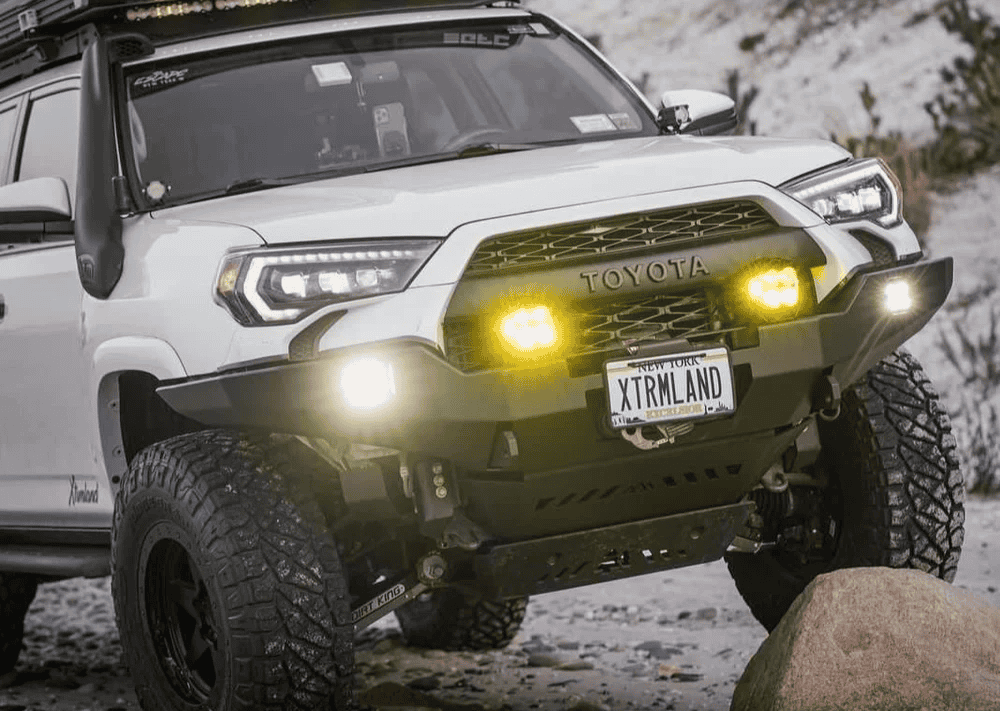Overland Vehicles

Truck cap dimensions are the foundation of a reliable overland truck. The key numbers are bed length, front and rear rail width, cab to tailgate length, cap height profile, and the rear opening size. Small differences between model years and trims can change fitment, so verify against the exact truck. Knowing the roof load rating, clamp spacing, and window layout helps you plan racks, tents, and interior storage without surprises.
The most common cap height profiles are cab high, mid rise, and high rise. Cab high follows the roofline for better airflow and a quieter ride. Mid rise adds a few extra inches of interior height for bins or a low sleeping platform. High rise maximizes cargo volume and headroom but may increase wind resistance, so consider fairings and rack placement.
Typical measurement points include:
Standard bed lengths vary. Many midsize platforms run about five to five and a half feet, while full size options are commonly five and a half, six and a half, or eight feet. Width can taper from front to rear, so measure both ends. These basic truck canopy dimensions will guide which cap families and mounting hardware will fit without gaps or bowing.
Use a rigid tape placed on the rail, not the bed floor. Confirm width at the top rail and just below, since some beds flare or taper. Note the radius of the front corners, as caps are molded to match that curve. If your truck has a spray liner or rail caps, measure with them installed to avoid pinch points.
Cab high caps keep a clean silhouette and reduce buffeting. Mid rise offers space for stacked totes, camera cases, or a fridge slide. High rise creates room for a thicker mattress or tall drawers. If highway mileage matters, plan a wind fairing and position roof loads behind the cab to reduce vortex noise.
A cap adds weight behind the axle, which can affect handling when loaded. Check the cap manufacturer’s dynamic and static roof ratings before adding a tent, awning, or recovery gear up top. Balance roof weight with cargo low in the bed to keep the center of gravity in check on uneven trails.
The phrase camper shell with door usually refers to caps with a framed glass rear hatch that meets the tailgate. Some setups use a full door panel for utility conversions or flatbeds where there is no tailgate, which can improve stand up access and dust control. Either approach hinges on accurate rear opening size and latch geometry, since that determines clearance for fridge slides and drawer faces.
Door sealing matters on gravel roads. Look for deep automotive bulb seals, drain gutters, and a snug striker plate to limit dust swirl. If you travel washboard routes, choose hinges and latches with metal reinforcement and replaceable bushings. Security ratings also vary. Steel or aluminum framed doors with interior lock rods resist prying far better than single point latches.
Windows are not just for visibility. Sliding side windows with screened vents help purge heat while parked. Solid sides with external hatches keep dust out and create a blank slate for molle panels, shovels, and traction boards. Wire pass throughs for a third brake light, scene lights, and cameras should be planned with grommets and drip loops to keep water out.
Once you have the hard numbers, tie them to your use case. If you plan a low sleeping deck above bins, mid rise cap height and a wider rear door opening will reduce knuckle busting access. For a bike and ski hauler, cab high with a long bed maintains airflow while still swallowing racks and a slim drawer. If you need maximum interior space and tall drawers, high rise profiles and reinforced roof tracks pair well with a roof tent.
Integration is where the measurements pay off. Roof bars should align with the cap’s internal reinforcement, and the dynamic rating should exceed your heaviest trail day. Inside, drawer heights should clear the door opening by a small margin, and the tailgate seal should meet the hatch without a gap to prevent dust intrusion. For electrical, pre plan a fused distribution block near the bulkhead and route loom along the cap frame to feed lights, fans, and a fridge without chafing.
When you are ready to turn numbers into a system, you can tap a team that builds around real world use. Explore our Overland rigs to see how canopy height, rack layout, and interior storage come together as one package. For a tailored approach, our Custom overland upfit process sizes the cap, maps door openings to drawer faces, and integrates racks, tents, and lighting for a cohesive setup. New to our shop and curious about process and approach? Start with Why choose OZK Customs and get a sense of how we listen first and build to your goals.
Your path from truck cap dimensions to a capable build does not have to be guesswork. Share your measurements, your gear list, and how you travel. We will transform those specs into a quiet, organized, and dependable overland truck that is ready for long miles and longer memories.
Ready to size your canopy with confidence and turn it into a trail ready system? OZK Customs designs and builds overland rigs, tailors cap height and door layouts, and integrates racks, power, and lighting so your truck works as one system. Share your platform, gear list, and timeline and we will map the fit, fabricate the details, and deliver a dialed build.
ADDRESS:
6159 E Huntsville Rd, Fayetteville, AR 72701
PHONE:
(479) 326-9200
EMAIL:
info@ozkvans.com